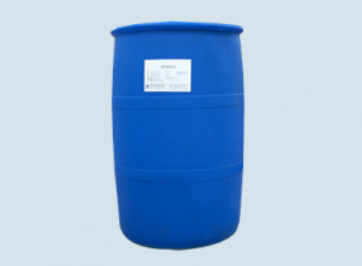The environmental problem is a concomitant problem of industrial development. Today, the major textile exporters all over the world have launched "green products" and "environmental protection products", we should pay attention to environmental protection and ecological indicators, and strive to develop green surfactants with good environmental compatibility, excellent ecology and excellent performance. In addition, with the further development of textile, dyeing and finishing technology and people's higher requirements for fabrics and environmental protection, we should pay attention to the following products in the future:
(1) A new type of surfactant for fiber.
The new synthetic fibers such as polyester superfine fiber, polypropylene fiber and Tencel fiber have complex morphology and structure, and the composition of oil-bearing agent and size is complex, so special desizing agent, refining agent and alkali deweighting accelerator are needed; It has the advantages of small density, large surface area, fast dyeing speed, unevenness and non deep dyeing. It needs special high temperature dispersant, leveling agent and deepening agent, and finishing after dyeing, so as to give it some properties such as softness and smoothness. Such surfactants should be developed in combination with fiber types.

(2) New surfactants for dyeing and finishing technology.
New dyeing and finishing technologies, such as ink jet printing, microcapsule and so on, put forward new requirements for surfactants. For example, the pretreatment of inkjet printing requires that the auxiliaries have good impermeability and wettability, and can significantly improve the dye uptake and fixation rate; Microcapsule technology requires the development of new and practical microcapsule core and wall materials.
(3) New functional surfactant for finishing.
The change of social environment makes people put forward more demands for textile materials and clothing, such as protective properties, and even medical and health care functions. High grade softeners, multifunctional softeners (such as modified organosilicon, organofluorine surfactants, etc.), anti wrinkle agents and safety finishing agents should be developed.
(4) Biosurfactant.
It is a kind of amphiphilic compounds with surface activity produced by the metabolism of biological system. This kind of surfactant has excellent fabric treatment performance and excellent environmental compatibility, so it has great potential market demand.
It is a kind of surfactant which is widely used. It can be combined with other types of surfactants to play a synergistic and synergistic role. It has the functions of defoaming, emulsifying, cleaning and dispersing. The main defoamers are fatty amides and polyoxyethylene dialkyl ethers; There are three series of emulsifiers: alkyl phenol polyoxyethylene ether (OP Series), dehydrated sorbitol ester of fatty acid (s Series), dehydrated sorbitol ester of polyoxyethylene fatty acid (T Series). Leveling agents such as Pingjia o, Pingjia O-15, etc. Although nonylphenol polyoxyethylene ether (TX-10) can be biochemical treated, its decomposition products are still phenols, which have fish toxicity and can damage the human reproductive system. Some European countries have passed laws to prohibit the use of TX-10, which can be replaced by natural fatty alcohol polyoxyethylene ether or sorbitol dehydrate with low toxicity. In addition, sugar based surfactants, alkyl glucosides (APG), sucrose esters (SE) and alkanolamides have attracted much attention due to their excellent application performance, low toxicity and excellent biodegradability.